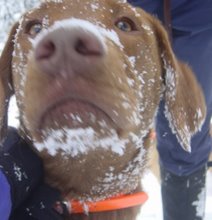Defining 'Insanity'
A common, colloquial definition of 'insanity' is, "repeating the same action and expecting a different outcome each time." Robert Mugabe, esteemed dictator of Zimbabwe, is about to become a living definition of insanity. Mugabe seized farms from white landowners, only to see their new black owners run that industry into the ground. One cannot expect this action to end any differently.
While the injustice done to the companies affected is enough to make one's blood boil, the real victims in this are the four out of five Zimbabweans jobless.
article
By Cris Chinaka 1 hour, 22 minutes ago
HARARE (Reuters) - Zimbabwe President Robert Mugabe on Wednesday threatened to seize foreign companies, including mines, that have raised prices and cut output in an economic "dirty tricks" campaign to oust his government.
Mugabe, 83, in power since independence in 1980, accused former colonial power Britain of seeking to overthrow him.
Political and economic analysts said the nationalization threat appeared to be aimed at winning Mugabe's ZANU-PF party votes in next year's general election -- echoing the government's campaign of farm seizures ahead of elections in 2000 that ended in economic disaster.
Speaking at the burial of a top military officer in Harare, Mugabe charged that some industrialists, including miners, had been drafted into a "regime-change" agenda by Britain, deliberately reducing production, raising prices and illegally banking foreign currency abroad.
"We will seize the mines ... we will nationalize them if they continue with the dirty tricks," an angry Mugabe said to a round of applause from hundreds of mourners at the funeral.
"All companies, we will take them over if they continue with their dirty game. Take note, we will be equal to the challenge. We are capable of playing that game too," he said.
RAISING STAKES
The nationalization threat by Mugabe raises the stakes against foreign firms and local company chiefs he has long accused of colluding with his enemies.
On Tuesday a government minister said Zimbabwe will transfer control of all companies, including foreign banks and some mining operations, to locals if a planned black empowerment bill is passed by the country's ruling-party dominated parliament.
Zimbabwe's business community -- including a dwindling number of local subsidiaries of multinational companies, older white-owned firms and black-owned companies which prospered after independence in 1980 -- is already struggling in what the World Bank calls the fastest shrinking economy for a country not at war.
Analysts said approval of the empowerment bill could deepen the economic crisis which has pushed Zimbabwe to the brink of collapse with inflation now believed to be over 4,000 percent per year.
Economic analyst Tony Hawkins said the government was employing a political ploy to distract people from the economic crisis that has left four in five Zimbabweans without jobs.
"I suppose the logic behind this thinking is because in 2000 the land invasions won them an election, company seizures could do the same in 2008," said Hawkins.
Mugabe said on Wednesday his government would not hesitate to jail company executives who were raising prices unreasonably as the hikes were designed to wipe out state-ordered wages meant to cushion the poor.
The government on Tuesday ordered prices of basic goods and services to be slashed by half to protect Zimbabweans after prices had risen by up to 300 percent within a week. The move pushed prices back to the levels of mid-June.
(Additional reporting by MacDonald Dzirutwe and Nelson Banya)










